![]()
![]() There aren’t many things that sound less festive than sitting through a PowerPoint presentation from the National Science Foundation, but after GeoKid celebrated Santa being able to find her even at 60-odd degrees south, that’s what we found ourselves doing early last Christmas morning. For the ice that had prevented us from getting to Palmer Station the previous day had cleared up enough for us to reach the smallest of the USA’s Antarctic bases, home to about 18 people in the winters, and 40 in the summers.
There aren’t many things that sound less festive than sitting through a PowerPoint presentation from the National Science Foundation, but after GeoKid celebrated Santa being able to find her even at 60-odd degrees south, that’s what we found ourselves doing early last Christmas morning. For the ice that had prevented us from getting to Palmer Station the previous day had cleared up enough for us to reach the smallest of the USA’s Antarctic bases, home to about 18 people in the winters, and 40 in the summers.
As PowerPoint presentations go, it was a pretty interesting look at the aims and logistics of Antarctic research. And sitting through it bought us the chance to go ashore and tour the station ourselves.
In our journal, Anne notes highlights such as the autonomous underwater gliders being used for data collection; photo displays of women Antarctic scientists; and the spill containment system. We were also keenly aware that this is one of the most rapidly warming places on the Antarctic Peninsula, which had caused the nearby glacier to retreat 1/2 mile since the station was built in 1965. Monitoring the changes in local ecosystems in response to this warming is one of the main foci of research at Palmer, though scientists are limited to where they can get by snowmobile or zodiac. Upon departing the station, we also snuck in a brief zodiac ride to see penguins and a group of juvenile elephant seals sunning themselves on a nearby point.

The barrels-o-boom at Palmer Station caused quite a few smiles. Inside, they contain emergency spill response materials.
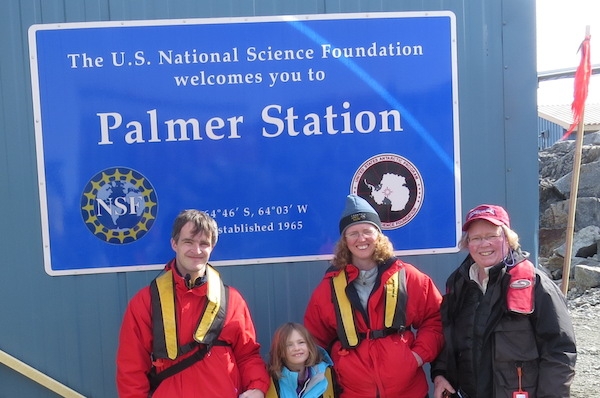
Special thanks to Anne’s mom, on the right, for making this incredible trip possible. Trip of a lifetime, Mom!
Over lunch, Corinthian took us to see a very different Antarctic outpost
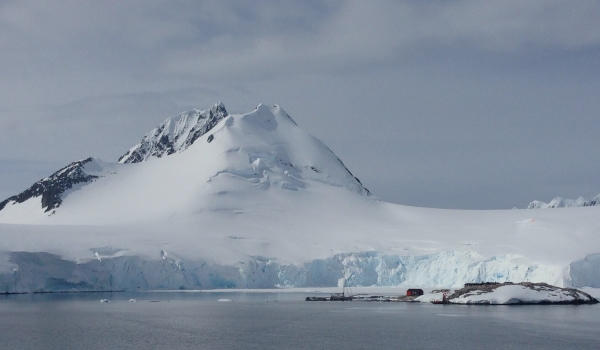
Little Port Lockroy, one of the first permanent bases to be constructed in Antarctica, and now a historic site and monument. Photo: Chris Rowan, 2013.
Anne: “Port Lockroy is a former British station operated as a living museum by the British Antarctic Trust. It was on a tiny island surrounded by glaciers and snow-capped mountains. Five volunteers live on the island from November-March, with no running water, or boat, and little electricity. They are dependent on tourist boats like ours to get in and out and to bring them water [they also harvest chunks of calved glacial ice that wash up on the shore].That seems overly much to me.” This year, the volunteers were all women, and had to beat out a pool of 200 applicants for the position.

The Port Lockroy outpost is in a spectacular location, especially on a sunny day. But imagine seeing that scenery every day and not being able to reach it! Photo: Chris Rowan, 2013
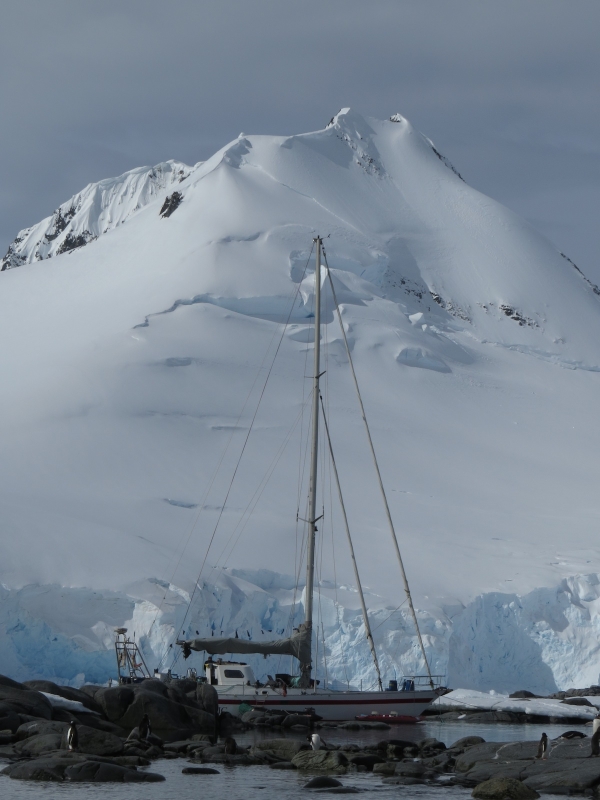
Believe it or not, people sail to Antarctica. This boat, moored at Port Lockroy, was appropriately named Pelagic. Photo by A. Jefferson.

View from the shore of Goudier Island, where Port Lockroy huts are located. Photo: Chris Rowan, 2013.
“The station had been preserved as it was in 1944, and it was fun to see the “period” newspapers, kitchen goods, etc. There were of course penguins nesting around the building and at the base of the flagpole bearing a British flag – a scenic place for a picture!”

Some of the important research carried out at Port Lockroy, involved bouncing radio waves off the ionosphere to determine the best frequencies for long-range transmission. This ionosonde, known as “The Beastie”, was what was used to do it. Photo: Chris Rowan, 2013.

One popular facility at Port Lockroy is the world’s most southerly branch of the Royal Mail. Apparently 70,000 cards are sent a year, with some of the proceeds used to support the museum.
In addition to the penguins nesting right under the huts, we took a brief zodiac ride over to nearby Jougla Point, where we not only saw nesting gentoo penguins, but also Antarctic shags with chicks.
The close relationship between people and penguins at this particular location has driven a study designed to see if there is any human impact on the breeding success of gentoos: some parts of the island can be freely accessed by visiting shore parties, and some parts are closed off, with yearly surveys to compare the different areas. So far, it seems that fortunately, our gawking does no harm.
We could have stayed longer at Port Lockroy, but since our ship was leaving, so did we. We closed our Antarctic Christmas with a scenic cruise along the Neumayer Channel before a festive dinner. The weather held, treating us to a spectacular sunset (or as close as one gets in Antarctica near the summer solstice) – and some humpback whales turned up to wish us a Merry Christmas, too.

Lots of intriguing geologic features exposed in the rocks along the Neumayer Channel. One of the things that was striking to us is how many of these geologically interesting places were pretty much wholly inaccessible. Photo by A. Jefferson.
Where we were today:


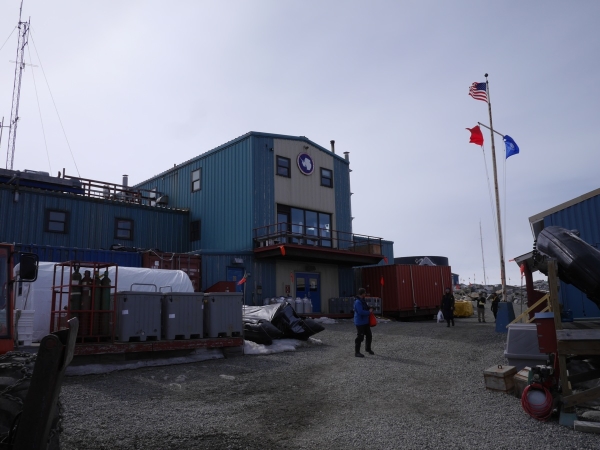
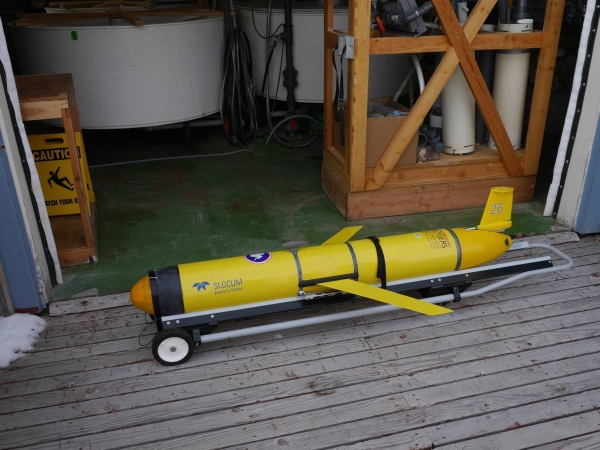
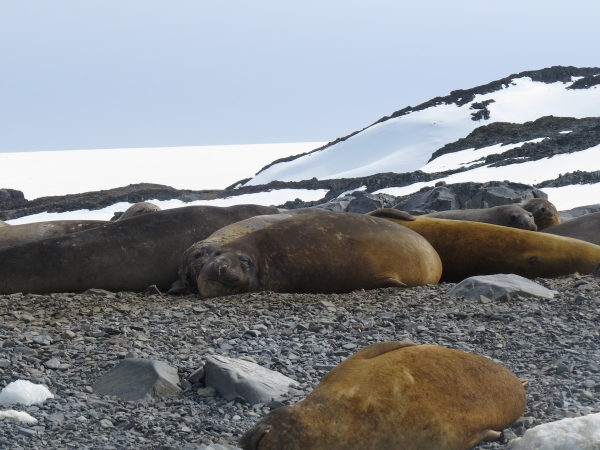

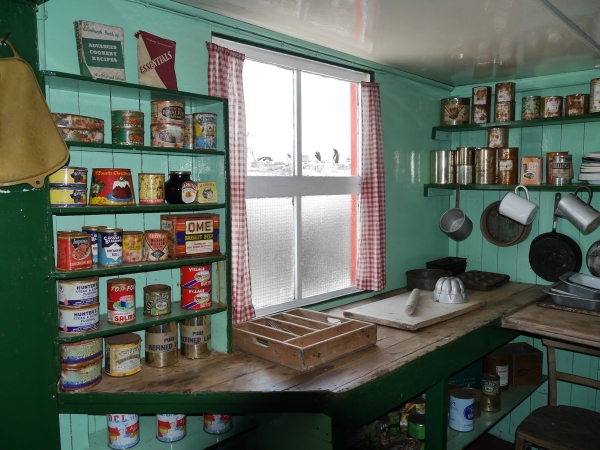



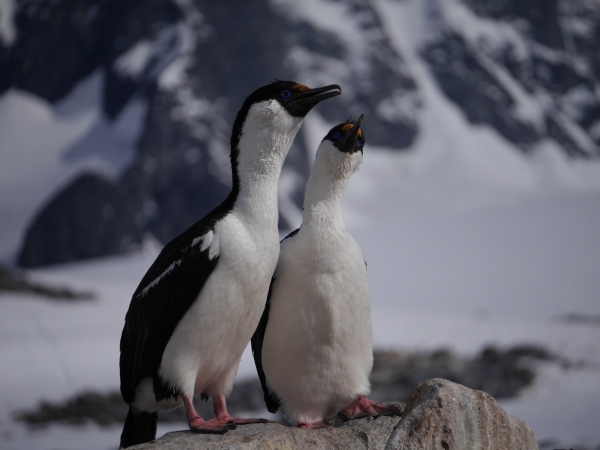
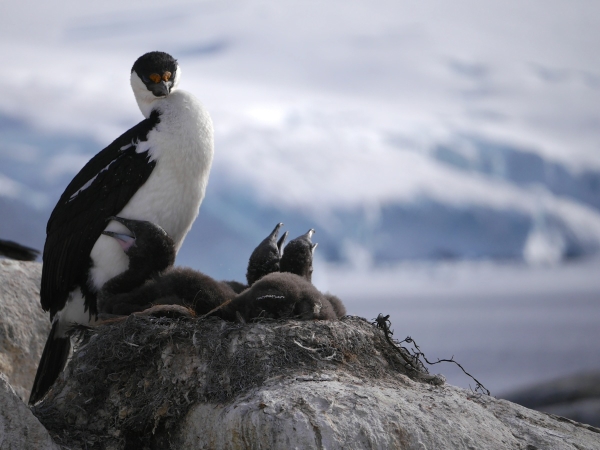

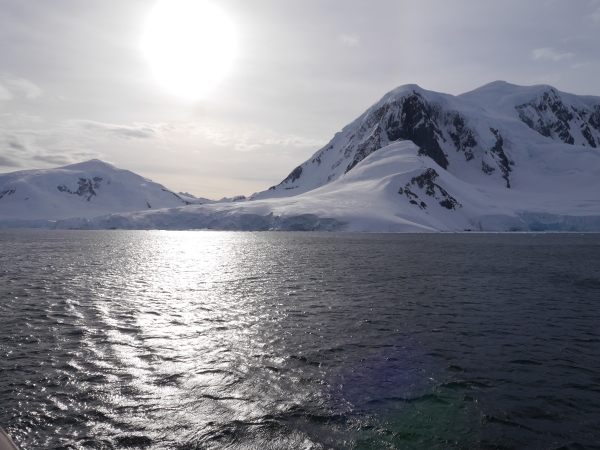
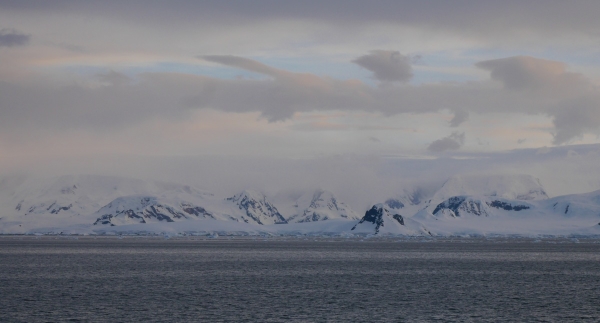
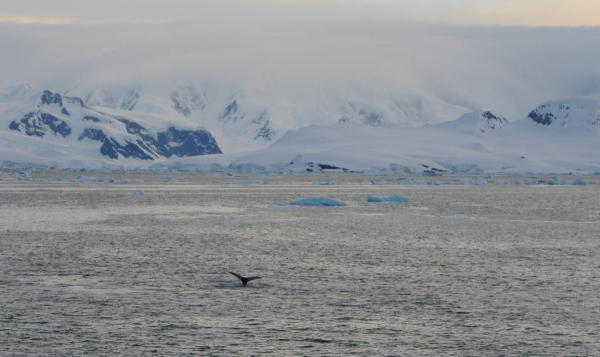
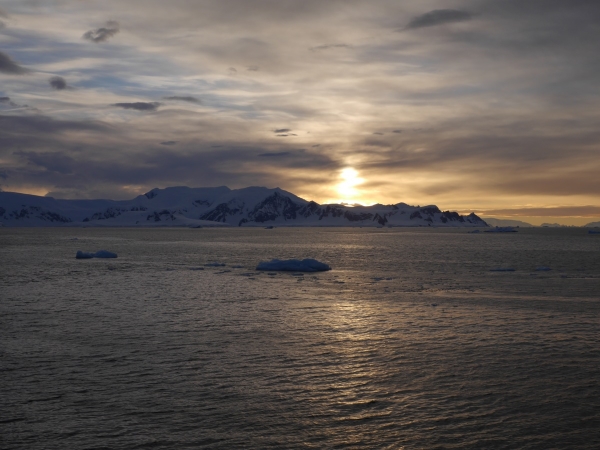




Links (1)-
Pingback: Sumatra +10: contemplating the power of tsunami | Highly Allochthonous